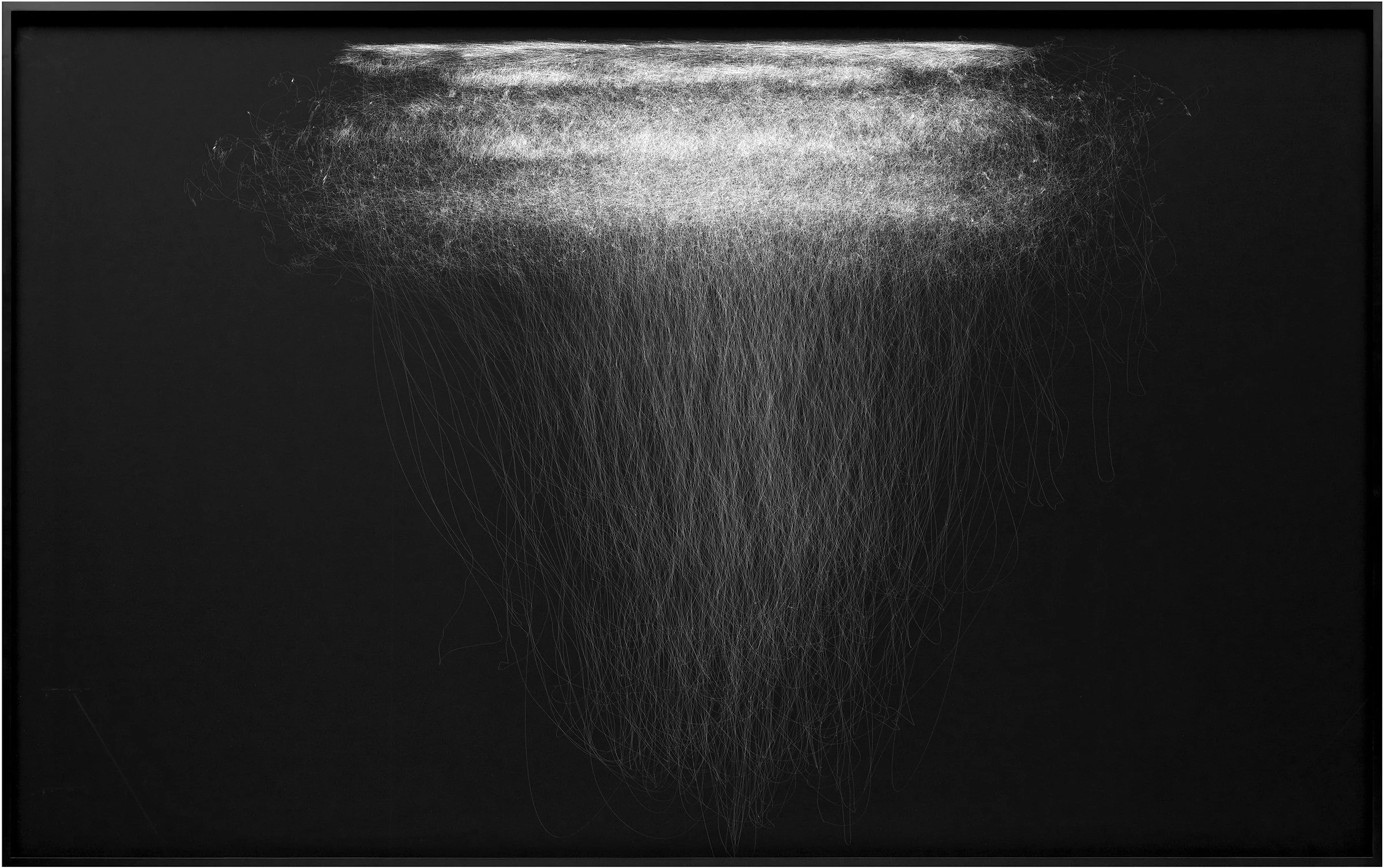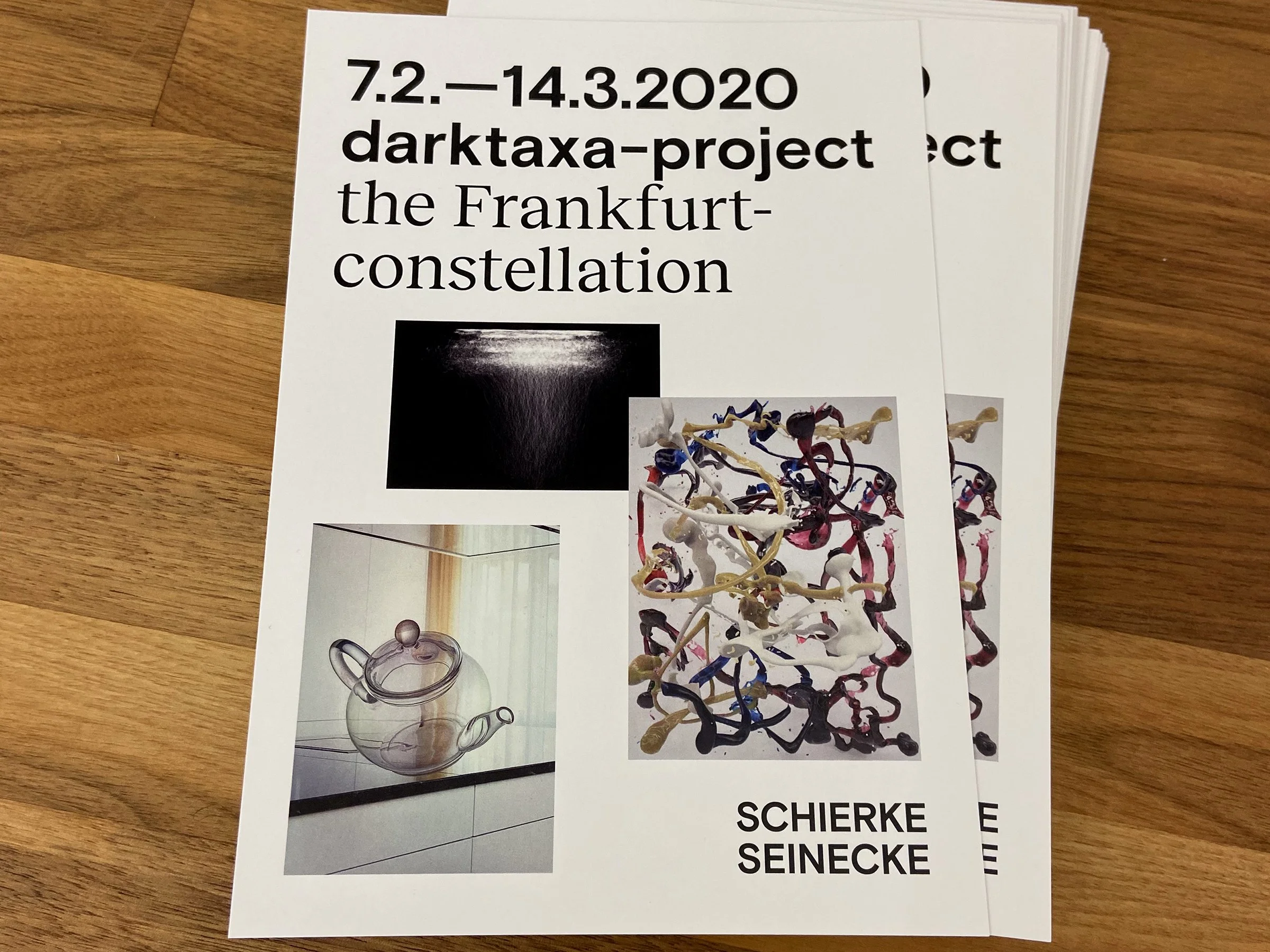DARKTAXA PROJECT: THE FRANKFURT CONSTELLATION
Schierke Seinecke Gallery, Germany
February 2nd – March 14th, 2020
Banz & Bowinkel, Arno Beck, Raphael Brunk, Philipp Goldbach, Alex Grein, Beate Gütschow, Achim Mohné, Susan Morris, Johannes Post, Michael Reisch, Björn Siebert, David Young
darktaxa-project: the Frankfurt-constellation
Under contemporary digital conditions, it is currently completely unclear what the term “photography” (in artistic as well as general usage) really means, or how this field should be meaningfully defined.
In darktaxa-project: the Frankfurt-constellation, this question is vehemently raised with regard to the new digital possibilities and applications. In a kind of open experimental dialogue, the exhibition brings together work by artists involved in digital photography, CGI, photogrammetry, scanography, augmented reality, computer graphics, motion capture, 3D / 4D software, 3D scanning, etc. and any conceivable hybrid of these tools.
Significantly, most of these new technological applications adopt visualization methods based on “photographic” principles. This means that the works shown are each inscribed, in varying degrees, with “photographic aspects”, whereby the traditional photographic seeing-models are partly adopted, partly developed, changed, hacked, glitched, simulated or completely abandoned.
As a counterpoint to the above, works are also shown that have not been created directly with the new tools, but that refer to these principles in various ways.
A main focus of the exhibition is on “new images”, discoveries and inventions; the “not yet seen” and the future-orientated generative potential of digital working methods - and less on the depiction of existing facts, the use of existing imagery and appropriation, or retrospective photo-historical references, etc.).
In the last few years completely new, independent image worlds and ways of working have developed that address the realm of the digital, virtual, tendentially intangible.
The exhibition tries to follow the latest developments, with the works shown undermining any clear reading or media attribution, which is a positive development. This implies an appropriation of these new tools under the term "photography" because, unlike photography, the new ways of working do not depend on the visibility and physical existence of the depicted. Rather, in the works shown, the relationship between presence and absence; real existence to representation and simulation, “reality” to fiction plays a crucial role. (Are the pictorial objects actually present, or are they fictions, simulations, renderings? Do the presented spaces follow photographic, familiar central-perspective-laws or are these spaces calculated, digitally transformed?).
The concept “image” is of particular importance here. Most of the works shown initially undergo several transformations, i.e. both material and immaterial stages. At the end of the respective production processes, however, a decision for a physically existent "image-object" with body, mass and extension in the real (exhibition) space, as the final manifestation of the work stands with all involved artists.
Thus the “image” is addressed as a substantial, factual and material phenomenon, the digitally virulent theme of dissolution and immersion is confronted with a counter-concept, a clear decision for the real, experiential, space).
In the triangle of reality - virtuality - digitality, the question is asked to what extent does the “photographic" function as a normative force, not only for the new ways of working and digital tools, but in a wider context, i.e. for our entire perception; for our understanding of reality under digital conditions.
darktaxa-project: the Frankfurt-constellation tries to investigate the superimposition, merging and potential dissolution of the media categories, and the resulting new possibilities against the background of the digital realm. Whether "photography" and its models of understanding continue in parts, or (and this is possible) whether we can depart from these models completely, to, in the longer term constitute new, digitally based models of understanding and seeing.
Michael Reisch, 2019
Susan Morris, Motion Capture Drawing [ERSD]: View From Above, 2012, Archival inkjet on Hahnemühle paper, 150 x 250 cm.
Susan Morris has been working with tracking devices worn on her body for well over a decade. For example, she wore an Acti-Watch (which records sleep/wake patterns) continuously for 5 years. The data for Motion Capture Drawing (ERSD): View From Above was recorded in a motion capture studio. Here Morris wore reflectors on various points of her body (such as the hands, head and back) that recorded the movements she made while working on an analogue drawing using pigment on paper over a period of two days. The resulting file tracked coordinates in 3-D, but Morris choose to output three different 2-D aspects of these: a side view, front view and a view from above (the latter is shown in the present exhibition). Each resulting ‘movement diagram’ is printed out, to scale, as large-format ink-jets showing white lines on a black background. Yet only the black is printed here - the line itself remains unprinted negative space. Although at first glance Morris’s work does not display any ‘photographic’ characteristics such as representationality, she claims that the piece carries distinct indexical aspects under digital preconditions. Morris has created and visualized a precise, digital, ‘trace’ which perfectly reproduces all movements executed over the time of the recording in 3D.
For further details on the motion capture work, please see ‘Drawing in the Dark’, Tate Papers #18, 2012
darktaxa-project: the Frankfurt-constellation investigates the superimposition, merging and potential dissolution of media categories, and the resulting new possibilities against the background of the digital realm. Whether ‘photography’ and its models of understanding continue in parts, or (and this is possible) whether we can depart from these models completely to, in the longer term, constitute new, digitally based models of understanding and seeing.
Michael Reisch, 2019
![Installation view Darktaxa: The Frankfurt Constellation , Schierke Seinecke Gallery, showing LEFT: Susan Morris, Motion Capture Drawing [ERSD]: View From Above , 2012. RIGHT: Alex Grein, Rolling (Pictures on a Screen) , 2019. PHOTO: Michael Reisc](https://images.squarespace-cdn.com/content/v1/686d401c6efc130268642501/201c2689-2c66-4b31-9baf-3abb899b968d/001+DARKTAXA+FRANKFURT+INSTALL_web-1.jpg)
![Installation view Darktaxa: The Frankfurt Constellation , Schierke Seinecke Gallery, showing LEFT: David Young, Learning Nature, 2018; CENTRE: Susan Morris, Motion Capture Drawing [ERSD]: View From Above , 2012, RIGHT: Alex Grein, Rolling (Pict](https://images.squarespace-cdn.com/content/v1/686d401c6efc130268642501/53a96b61-f278-4e2c-afcf-610c0a99ac21/002+DARKTAXA+FRANKFURT+INSTALL_web-2.jpg)
![Installation view Darktaxa: The Frankfurt Constellation, Schierke Seinecke Gallery, showing LEFT: David Young, Learning Nature, 2018; CENTRE: Susan Morris, Motion Capture Drawing [ERSD]: View From Above, 2012, RIGHT: Alex Grein, Rolling (Pictures on](https://images.squarespace-cdn.com/content/v1/686d401c6efc130268642501/5bcdcd62-31cb-4941-984c-58e6b094357b/003+DARKTAXA+FRANKFURT+INSTALL_web-3.jpg)


